About the Show

Rachel is an original musical about the life of biologist and nature writer Rachel Carson. Author of "Silent Spring," which sparked the modern environmental movement, Carson led an extraordinary life. Struggling to find her place in the world as a scientist and a woman, her skill as a writer eventually brings her success and critical acclaim. However, when the destructive nature of DDT and other new pesticides is brought to her attention Carson jeopardizes her success, her health, and most importantly the deep relationship she shares with her neighbor Dorothy Freeman to take a stand for the earth.
Logo by Angad Singh Thakuri.
Logo by Angad Singh Thakuri.
The History
Early Life
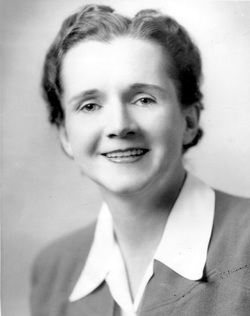
Rachel Louise Carson was born on May 27, 1907 in Springdale, Pennsylvania. She was the daughter of Maria (McLean) and Robert Carson, and had two older siblings. From a young age, Rachel found she was passionate about nature and writing. She had her first work published at age ten, in the St. Nicholas Children's magazine. In 1925, Carson began attending PCW (Pennsylvania College for Women) with the intention of pursuing a career in writing. Halfway through her studies however, she switched her major to biology after being inspired by her professor (and later friend) Mary Scott Skinker. After graduating from PCW, Carson was awarded a scholarship that enabled her to continue her studies in biology at Johns Hopkins University. She earned her Master's degree in Zoology there.
Originally intending to continue on to a doctorate, Carson was forced to look for work after achieving her Master's degree to help support her family. She found part-time work writing radio scripts for the U.S. Bureau of Fisheries in 1935 and in 1936 was appointed a junior aquatic biologist with the department - she was one of only two women to work there on a professional level. Carson's government supervisor, Elmer Higgins, encouraged Carson to begin writing freelance after she presented to him a particularly well-written government brochure on marine life.
Photo Credit: Rachel Carson, 1940. Fish & Wildlife Service employee photo.
Originally intending to continue on to a doctorate, Carson was forced to look for work after achieving her Master's degree to help support her family. She found part-time work writing radio scripts for the U.S. Bureau of Fisheries in 1935 and in 1936 was appointed a junior aquatic biologist with the department - she was one of only two women to work there on a professional level. Carson's government supervisor, Elmer Higgins, encouraged Carson to begin writing freelance after she presented to him a particularly well-written government brochure on marine life.
Photo Credit: Rachel Carson, 1940. Fish & Wildlife Service employee photo.
Struggles and Success
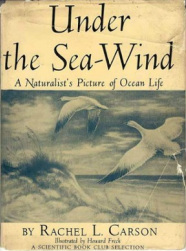
In 1937, Carson's older sister Marian died, leaving Rachel the sole provider for an aging mother and two nieces. However, her luck changed when she was contacted by Simon & Schuster, a publishing house, and was encouraged to expand one of her articles into a book. Several years of writing resulted in Under the Sea-wind (1941) which received critical acclaim, but sold poorly due to the publishing coinciding with the attack on Pearl Harbor. It was not until 1948 that Carson felt confident enough to begin writing a second book. She began to transition her career away from the government bureaucracy and attempted to earn a living solely by writing. It was this year that she hired literary agent Marie Rodell, with whom she developed a close personal bond. In early 1950, the Oxford University Press published Carson's second book, The Sea Around Us. The book received critical acclaim, topped the bestseller list for 86 consecutive weeks, won the 1952 National Book Award for Nonfiction and the Burroughs Medal, earned Carson two honorary doctorates, and even led to the republication of Under the Sea-Wind, which became a bestseller itself. Rachel Carson had finally achieved financial independence and was able to leave her government job in 1952.
Dorothy Freeman
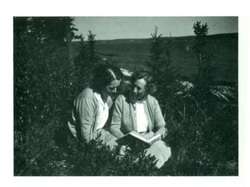
In 1953, Rachel and her mother moved to Southport Island, Maine, where she first met Dorothy Freeman. Although Dorothy was married to Stan Freeman with an older son, she and her new neighbor Rachel became close very quickly. The two women shared many interests - nature chief among them - and developed a strong bond. They spent many summers together and exchanged hundreds of letters while apart. Shortly before Carson's death, the two destroyed hundreds of those letters. There has been a great deal of speculation on the relationship, but all that is known is that Carson and Freeman shared a deeply profound friendship at a time when Carson sorely needed it. Unfortunately, tragedy struck the Carson family again in 1957 when Carson's niece died at age 31, leaving behind a five-year-old son, Roger Christie. Rachel adopted Roger and continued to care for her aging mother, but had to move the family to Silver Spring, MA. Nonetheless, Rachel and Dorothy remained extremely close for the rest of Rachel's life.
Silent Spring
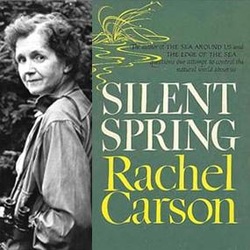
There were a number of factors that set Carson on the path to publishing her most famous and controversial work, Silent Spring. First, it was not a subject wholly unknown to Carson, who had proposed several articles on DDT during her time writing freelance for various magazines. However, it was generally considered unappealing and it was not until the late 1950s that Carson began to collect materials for a book. The USDA's fire ant eradication program in 1957 was a cause of increased concern for Carson, as it included the aerial spraying of a combination of DDT and fuel oil over private land. Olga Owens Huckins sent Carson a copy of her published letter in 1958, in which she described the disastrous effects of aerial spraying on her property and asked if Carson knew anyone in Washington who could help. Carson was initially reluctant to take on the project herself as her health had been precarious, she had new parental responsibilities with Roger, and - as Dorothy often reminded her - it was a seriously dangerous endeavor to criticize government behavior in such a public way. However by 1959, Carson was too disturbed by effects of pesticides to walk away from the project.
Sickness and Threats
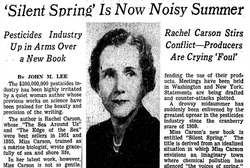
Though Carson's progress began at a good pace, in 1960 she was diagnosed with a duodenal ulcer followed by several infections which considerably slowed her progress. Just when she began to recover, doctors discovered several cysts in her breast and encouraged her to have a mastectomy as a precautionary measure. By December of that year, Carson discovered that her doctor had misled her, and that her tumor was malignant and her cancer had metastasized. Despite the delays, Carson finished the book and it was published in 1962 by Houghton Mifflin. There was an immediate - though not unexpected - backlash from chemical companies. The DuPont and Velsicol chemical companies threatened to sue unless publication was cancelled, there was an inundation of government propaganda supporting pesticides, and lobbyists even lodged a slew of non-specific complaints - some anonymously. Carson was criticized for not having a biochemistry background, for letting her emotions distort the truth, for standing in the way of science and progress, and for being unmarried despite being physically attractive. Making matters worse, Carson was undergoing radiation therapy for her cancer during this time, leaving her weak and unable to make many public appearances - another thing her opponents were quick to criticize her for.
Rachel's Death and Legacy
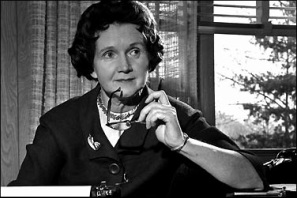
Despite the threats, Carson and her publisher's lawyers had confidence in the scientific soundness of the book and proceeded with publication. Rightly so, as the book was largely affirmed and approved by scientists. Ultimately, the fervor of denouncement coming from chemical companies backfired, as they merely created a larger controversy and more interest in the topic of pesticides - and more interest in buying Silent Spring. Within a year, the attacks on Carson and her book had faded to a whisper. In one of her last public appearances, Carson testified before President John F. Kennedy's science advisory committee. The committee issued its report in 1963, and stood largely in support of Carson's scientific claims.
Carson became increasingly ill from her breast cancer and radiation treatment, and was diagnosed with a respiratory virus and then anemia in January of 1964. In March, they discovered her cancer had spread to her liver. On April 14, 1964, Rachel Carson died of a heart attack. She passed away in her home in Silver Spring. Although she died young, with many things she had hoped to do left undone, Rachel did leave behind an enduring legacy. Silent Spring sparked the environmental movement in the 1960s, and began the kind of thinking which lead to modern day ecology. DDT and other pesticides which had been indiscriminately used without regulation were severely limited, and could no longer be used on private property without consent. By 1970, the Environmental Protection Agency (EPA) was formed, another measure advocated by Carson, and one that immediately began working to control the pollution of the Earth.
Written by Jessie Field.
